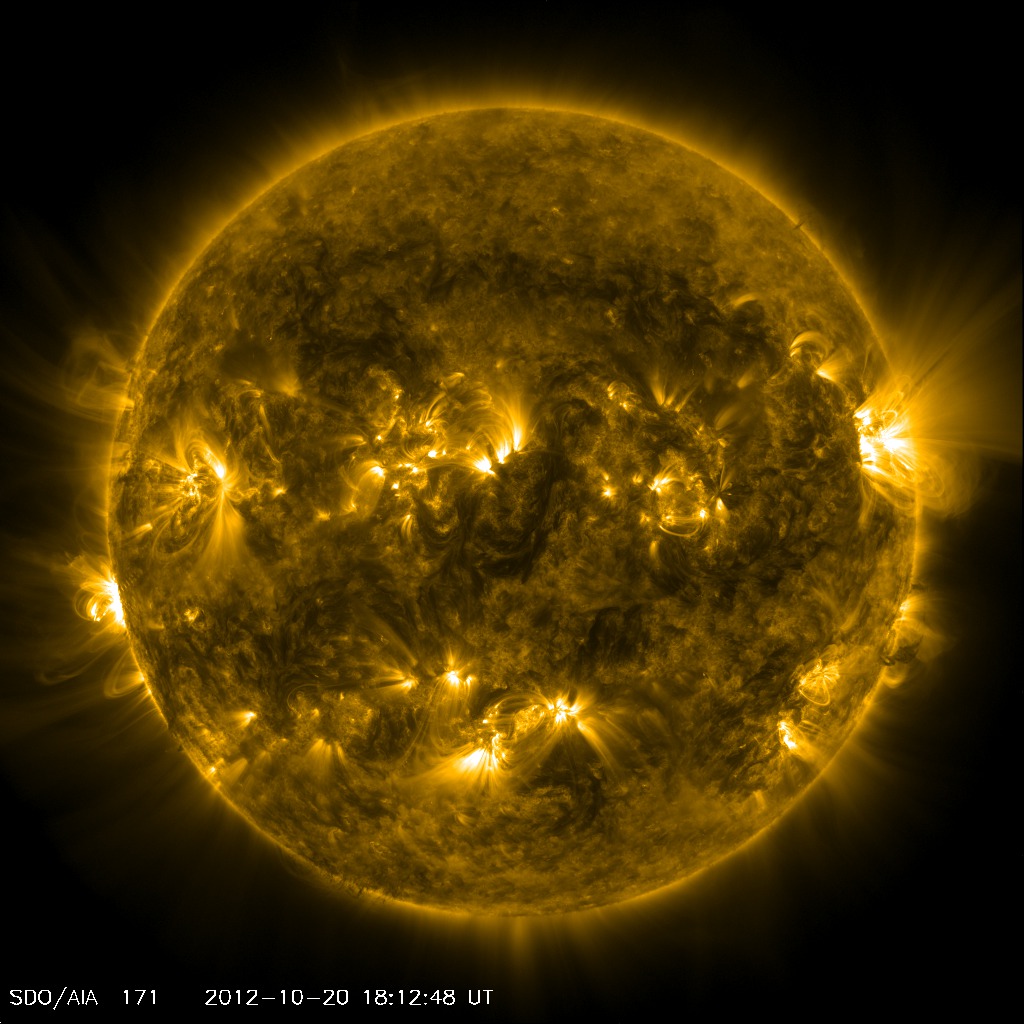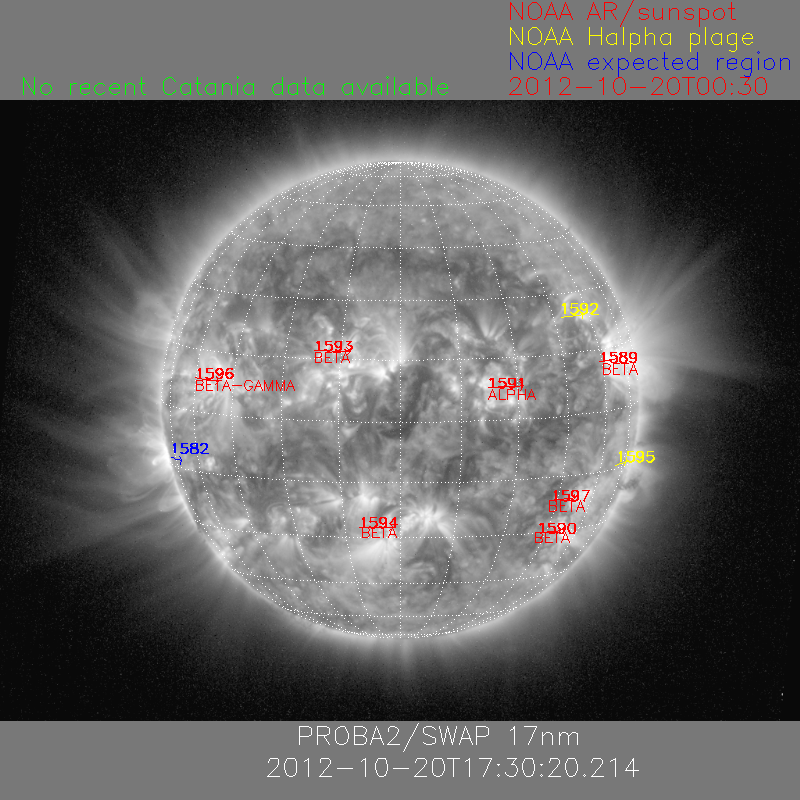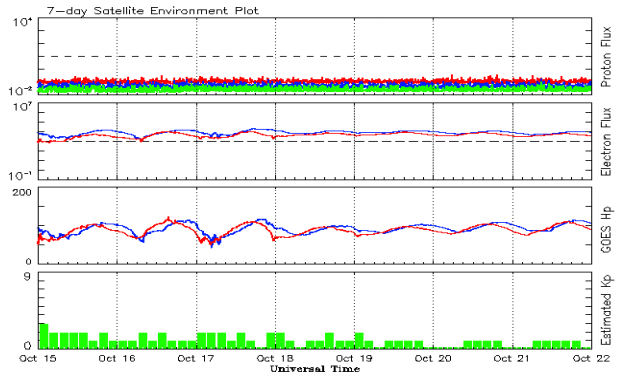

| Visitors Now: | |
| Total Visits: | |
| Total Stories: |
Space weather highlights: October 15 – 21, 2012
Solar activity ranged from low to high levels in last 7 days. Activity was low during October 15 – 19 due to mostly low-level C-class flares. The largest flare of this interval was a C7 on October 17, 2012 at 08:02 UTC from Region 1596 (N07, L=150, class/area Eho/460 on October 21) which displayed a beta-gamma magnetic configuration during most of its transit.
Activity increased to high levels on October 20, 2012 due to an impulsive M9 x-ray flare at 18:14 UTC from Region 1598 (S12, L=113, class/area Dhi/270 on 21 October) as it crossed the east limb. The M9 flare was associated with a Type II radio sweep (estimated shock speed 516 km/s) and a non-Earth-directed coronal mass ejection (CME).
Activity decreased to moderate levels on October 21, 2012 due to an M1/Sf flare at 20:03 UTC from Region 1598, which was also associated with a non-Earth-directed CME.
No proton events were observed at geosynchronous orbit.
The greater than 2 MeV electron flux at geosynchronous orbit was at high levels during most of the period.
Geomagnetic field activity was at unsettled levels early on October 15, then decreased to quiet levels for the rest of the period
Space weather outlook: October 22 – November 17 2012Solar activity is expected to be at low to moderate levels during October 22 – November 02 with M-class flare activity likely from Region 1598. Activity is expected to decrease to low levels during November 03 – 17. However, there will be a chance for M-class flare activity beginning November 15 as (old) Region 1598 returns to the visible disk.
No proton events are expected at geosynchronous orbit.
The greater than 2 MeV electron flux at geosynchronous orbit is expected to be at mostly high levels during October 22 – 24. A decrease to normal to moderate flux levels is expected during 25 October – 04 November. An increase to mostly high flux levels is expected during November 05 – 17 .
Geomagnetic field activity is expected to be at quiet to unsettled levels during October 22 – 23 with a slight chance for active levels due to a coronal hole high-speed stream (CH HSS). Quiet levels are expected during October 24 – November 07. An increase to unsettled levels is expected on November 08 due to a solar sector boundary passage followed by a co-rotating interaction region in advance of a CH HSS.
A further increase to active to minor storm levels is expected on November 09 due to the onset of a CH HSS. Activity is expected to decrease to quiet to active levels on 10 November as CH HSS effects subside. A further decrease to quiet levels is expected during 11 – 17 November.
Source: NOAA / SWPC
Featured image: SDO AIA 171 – Solar flare C7 – October 17, 2012 at 8:02 UTC
Related posts:
- CME will likely pass above Earth’s north side on Jan 22, auroras expected NOAA/SWPC have determined that the CME from Active Region 1402...
- Solar ‘climate change’ could cause rougher space weather Recent research shows that the space age has coincided with...
Space weather highlights: October 15 – 21, 2012
2012-10-22 07:00:09
Source: http://thewatchers.adorraeli.com/2012/10/22/space-weather-highlights-october-15-october-21-2012/
Source:






